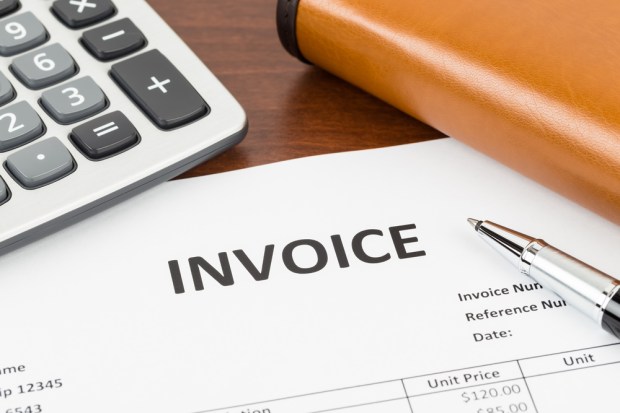Credable CEO: Lessening The Pain Of Late Payments For SMBs

It stands as one of the top pain points in B2B payments, a place of uncertainty and anxiety, a spot where a late or ignored payment can fatally wound a business: the collection of money owed on outstanding invoices. But every source of pain is a revenue opportunity, and the story of a Swedish insurance startup shows how the combination of digital tech and trade insurance for SMBs could lead to greater peace of mind for merchants engaged in overseas trade and other endeavors.
For the latest PYMNTS “Monday Conversation” podcast interview series, Karen Webster talked with Richard Garnier, the CEO of Credable, which began offering its invoice insurance services in March. The basic idea behind the operation is to enable small- and medium-sized businesses to quickly buy insurance online or via mobile devices, protecting them against lost or ignored debts from the companies they supply.
The inspiration for Credable came when Garnier recognized there was a “sweet spot” that stemmed from the chance to “digitize analog [insurance] processes, and using digital to take the solution to a whole new level,” he told Webster during the recent interview.
Insurance is a complex world of many moving parts, including data collection, mathematical models and risk assessment. In some ways, the difficulties can increase when a company tries to do risk management in real time. So far, though, Credable’s claim payout rates are within insurance industry norms, Garnier said, and its technology seems destined to integrate with the in-house invoicing systems of its customer base.
So, how does one insure invoicing via digital methods?
Potential clients go online with Credable to check the creditworthiness of their customers, using data accumulated by the Swedish firm, which can leverage the database of its parent company, Allianz. Those potential clients receive a real-time credit rating and a quote, and can instantly buy invoice insurance as needed. A client uploads an image of the invoice to the Credable app. Credable allows its clients to buy that insurance for up to 15 days after issuing an invoice.
In large part, the appeal for such insurance comes from the stakes involved. “To an SME, nonpayment or late payments can be catastrophic,” Garnier said. “It’s a very existential threat.”
That threat not only comes from dishonest customers or those who are financially unstable, but also from the slow pace of some companies’ payment authorization processes, or the fact that a company simply goes bust before paying off its debts to suppliers. “You are left holding an invoice and you have a very big hole in your account,” he said.
Garnier said Credable clients can file claims on late payments on the first day those invoices are overdue, with his company typically putting the insurance payoff into the client’s bank account within 30 days. That compares to an industry norm of 180 days. “We are looking to offer accelerated payouts in forthcoming products,” he told Webster.
Actual and potential clients for invoice insurance include a wide range of companies.
Clients, for instance, might want to hedge against orders made by “big names that take longer to pay, or smaller companies they are not completely sure about,” Garnier said. A new customer in a distant country — one that is not practical for company officials to immediately visit — could justify an insurance purchase, as would a business “you heard about on the grapevine and are worried about.”
Pricing, too, can range significantly, depending on how risk is assessed by Credable’s algorithm. It takes in a variety of factors, including macroeconomic ones — for instance, the business risk associated with churn of national governments in Italy. A sector with a “long, complex supply chain” also would tend to have higher invoice insurance prices, he said, as would an industry with a high rate of defaults.
“For a high-risk company in the fashion industry in Spain, we may just underwrite [a policy] of 10,000 euros,” Garnier said, “but a well-known retailer in Sweden could get half a million euros — it would probably be automatically approved.”
So, what’s next for Credable, besides growing its business of direct sales of invoice insurance policies?
The company aims to form close relationships with invoice solution providers and payment channels, and integrate its API into companies’ invoicing systems, he said. “We are building those relationships and technical partnerships, but I cannot announce anything now,” he told Webster.
That said, he offered nothing but an optimistic outlook about the spread of these types of insurance payments and the technology behind them. “The level of enthusiasm from our partners is stronger than we thought,” Garnier said.